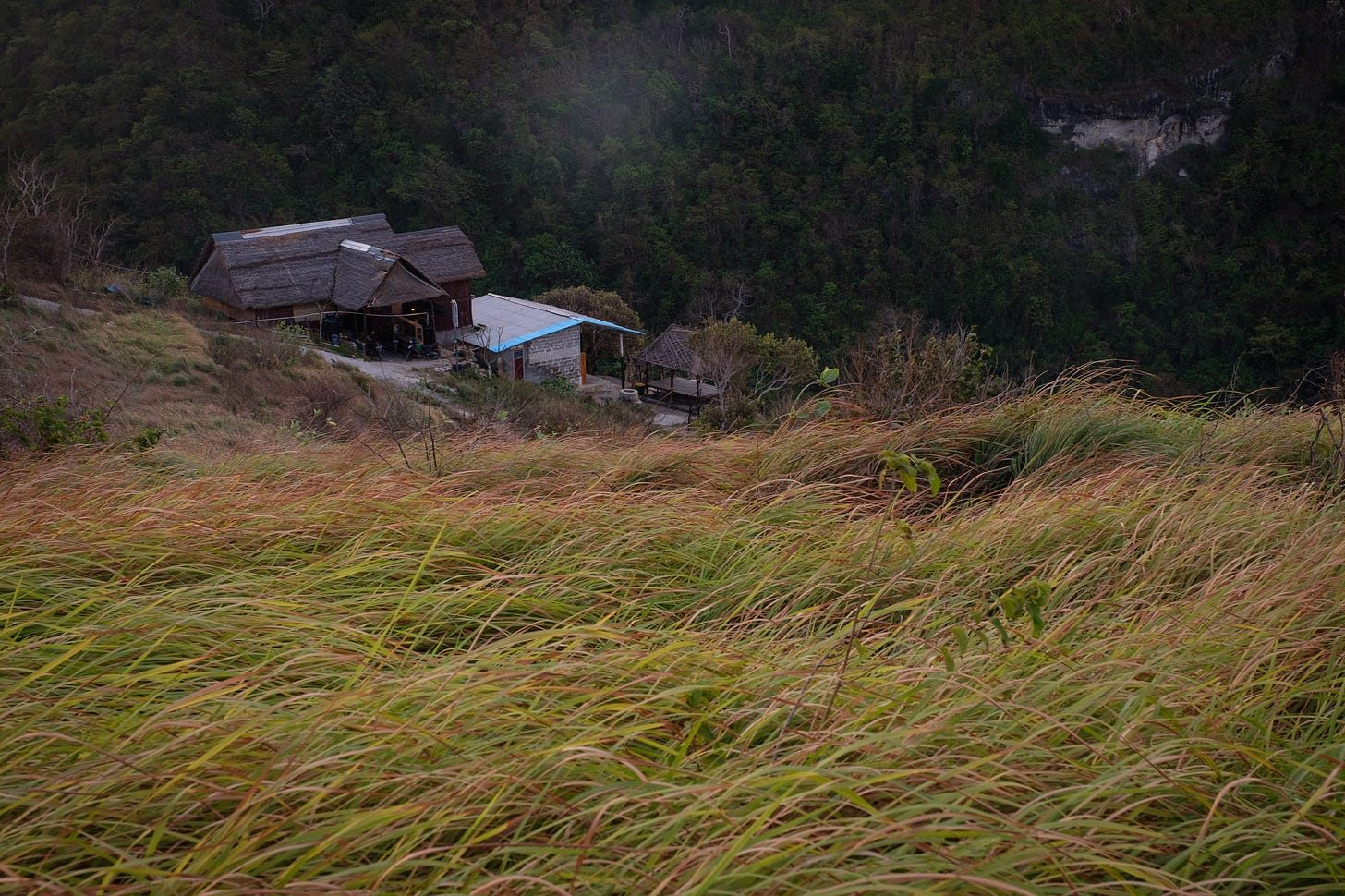Recapturing memories in a place I loved before: a fool's quest?
On revisiting Nusa Penida, now that it's become a popular destination for daytrippers from mainland Bali. (Really an essay about rethinking why and how I travel.)
However you found your way here, welcome! I’m Emily, and I write letters about how we seek and tell stories to make sense of a changing world and our place in it.
Sometime in July, W.C. and I made a trip to Bali. The impetus was a wedding—the bride is part Indonesian—and we decided to extend our stay to travel a little.
I had been to Bali before and anticipated it would be even more busy with tourists this time of year, which coincides with holidays in other countries. I had also heard that many places, such as Canggu, had since developed rapidly, so I had no grand ambitions for Bali; the idea was not to try to have “the perfect vacation”, or, for me, “the perfectly imperfect adventure” 😅—though they’re two sides of the same coin, really. The idea was just to see friends and family and have our first travel break in several months and not worry so much about getting off the beaten path. Since it would be W.C.’s first time there, we would also be visiting some places I had already been to, one of which ended up being Nusa Penida, a small island southwest of mainland Bali, which I have very fond memories of and hoped to recapture some of them with W.C., even if I knew that would be unlikely. But part of me was simply curious about how it had changed—that’s what people kept saying: how much it had changed—since I had last seen it.
While in Ubud, where we spent some time first, I saw Nusa Penida advertised everywhere as a popular day trip—especially since the construction of the new Sanur harbor, said a taxi driver (though we actually left from Kusamba Port, which is closer to Ubud and also to Nusa Penida). Having been there before, a day trip sounded like an impossible proposition to me. And even if you don’t do very much, traveling is essentially about soaking up the atmosphere of place; how do you do that going there and back in the same day? Locals and tourists we met warned us about how overcrowded Nusa Penida had become, and lamented how people had to queue to take photos at tourist sights (even if some of them hadn’t been there themselves or, at least. not recently). But I was undeterred. I remember my first trip there, years ago, so fondly, that I decided it would still be nice to go with W.C. We didn’t plan to queue for photos at tourist sights anyway, and if necessary, we would just avoid them entirely. Right?




